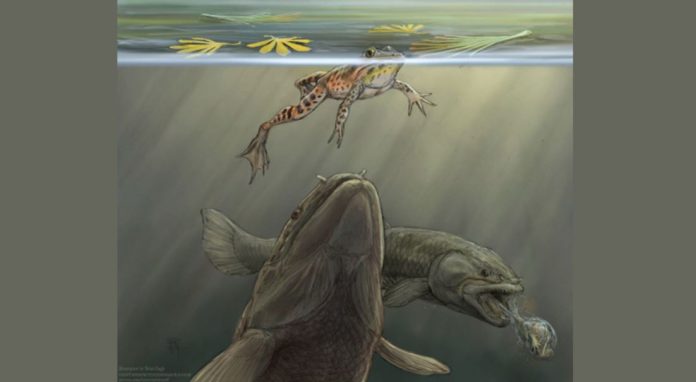SALT LAKE CITY, Utah, Sept. 14, 2022 (Gephardt Daily) — A team of paleontologists has recovered a fossilized pile of amphibian bones believed to have been regurgitated by the predator about 150 million years ago in what is now southeast Utah.
Study authors recently published their work in the journal Palaios. The team unofficially refer to their work as being on the “fish-puked tadpole,” says a statement issued by the Utah Division of Wildlife Resources.
The amphibian bones in the pile are tiny, some just 0.12 inches long, and include some of the smallest individual bones in the Morrison Formation, which is the same late Jurassic formation famous for dinosaurs including Stegosaurus and Brachiosaurus.
“The shape, preservation, and size of the frog bones indicate that at least two individuals were present and that one may have been a tadpole; there appears to have been at least one salamander as well,” says the DWR statement.
“Although the site in southeastern Utah is dominated by plant fossils, these amphibians and bowfin fish are also known from the site, which represents a pond deposit.”
Officials believe the the predictor that ate the amphibians could have been a fish, a semi-aquatic mammal or turtle. Of those, only bowfin fish fossils have been discovered at the location.
“We can’t be sure, but among the animals of interest here, the current best match, and the one known to be at the scene, is the bowfin fish,” says John Foster, study co-author and curator of the Utah Field House of Natural History State Park Museum, in the released statement. “Although we can’t rule out other predators, a bowfin is our current suspect, so to speak.”
Paleontologists involved in the project are from the Utah Division State Parks, the Utah Geological Survey and the Flying Heritage & Combat Armor Museum, the news release says.
The site where the regurgitated pile was found produces well-preserved plant fossils of a
diversity of ginkgoes, ferns and conifers in a small pond or lake setting, the Utah DWR statement says. The flora indicates a wetter and more lush setting for southeastern Utah at the time.
“I was so excited to have found this site, as Upper Jurassic plant localities are so rare,” said study co-author Jim Kirkland of the Utah Geological Survey. “We must now carefully dissect the site in search of more tiny wonders in among the foliage.”







